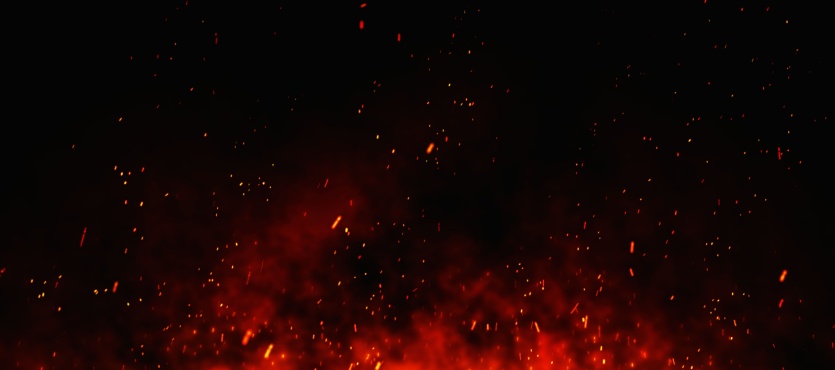Researchers at the Veterans Administration acknowledge that burn pit smoke could cause DRLD, but they insist that other causes are just as common.
VA established the Airborne Hazards and Burn Pits Center of Excellence (AHBPCE) in 2019 at VA’s War Related Illness and Injury Study Center (WRIISC) in New Jersey. Environmental health specialists, epidemiologists, and other experts from the Center began working to better understand how a range of exposures, injuries, and other factors are related to certain health conditions that Veterans may experience.
The Center also uses information provided by Veterans through the redesigned Airborne Hazards and Open Burn Pits Registry to support this research and conduct in-depth clinical evaluations through the Post-Deployment Cardiopulmonary Evaluation Network (PDCEN).
These researchers concluded that many health conditions related to these hazards are temporary and should disappear after the exposure ends. Other longer-term issues may be caused by a combination of hazardous exposures, injuries, or illnesses, including fuel, aircraft exhaust, and other mechanical fumes, sand, dust, and particulate matter, fuel, aircraft exhaust, and other mechanical fumes, and blast or noise injuries.
Burn Pits
Most of us put our refuge in dumpsters which large trucks then carry to waste disposal facilities. In the early 2000s, there were no waste dumpsters in places like Afghanistan and Iraq, at least for the U.S. military. There certainly were no garbage trucks or waste disposal facilities. So, the DoD authorized the use of burn pits.
Like many temporary measures, burn pits soon became a permanent part of the landscape in Southwest Asia. The Eiffel Tower was a “temporary” measure for the World’s Fair in Paris.
In the proper environment, burn pits are almost completely safe. For an army on the move, throwing trash into a burn pit (an open-air waste disposal pit into which garbage is dumped, doused with jet fuel, and set ablaze) is like a group of hikers throwing their garbage on a campfire.
Military planners hoped that would be the case in Iraq and Afghanistan. But these conflicts quickly became wars of attrition. Military units spent months or years in the same place, as opposed to hours or days. So, every day for months or years, camp residents breathed toxic smoke.
This smoke could cause a wide range of toxic exposure illnesses, mostly various kinds of lung diseases and cancer.
Toxic particles burn the airways inside the lungs. The resulting scar tissue blocks these airways, many of which aren’t much larger than the tip of a pencil.
The toxins, specifically the heavy metal particles in the smoke, can cause brain cancer and many other similar illnesses. The body cannot naturally dispose of such particles. So, they linger in the body and form tumors. The toxicity alters cell DNA and makes these tumors malignant.
Contractors and Burn Pits
Usually, private military contractors are like travel nurses. These professionals are well paid. However, they get all the work assignments and shifts that no one else wants. In many cases, private military contractors are paid two or three times what regular servicemembers are paid.
That mathematical evaluation is a bit deceptive because, unlike military personnel, contractors have no benefits and no job security. But nonetheless, money is money, at least in the short term.
In exchange for this high compensation, private military contractors usually get all the assignments no one else wants. In Southwest Asia, burn pit maintenance was at the top of that list.
Contractors, frequently KBR contractors, usually serviced burn pits and wore little or no PPE (personal protective equipment). A pandemic-era paper face mask is a little more effective than covering one’s mouth with a handkerchief, but not much more effective. Furthermore, the aforementioned heavy metals and other toxins are small enough to be absorbed directly through the skin.
As a result, private military contractors in Iraq and Afghanistan breathed a disproportionate amount of burn pit smoke. Many lung diseases and cancer illnesses have very long latency periods. Victims exposed to toxins in the early 2000s might not show signs of illness until at least the 2020s and probably not until the 2040s or 2050s.
The Defense Base Act and Burn Pits
Long before the coronavirus pandemic, an Administrative Law Judge with the Department of Labor, which oversees Defense Base Act claims, ruled that burn pit smoke, not aircraft exhaust, dust, and the other non-burn pit causes mentioned above, could cause deployment-related lung disease. DRLD is an umbrella term that applies to many breathing disorders, many of which are fatal.
VA lawyers continue to fight burn pit claims. But for injured private military contractors, a pot of gold (of sorts) awaits at the end of the rainbow (of sorts).
This pot of gold is compensation for lost wages and medical expenses.
Usually, a Defense Base Act lawyer can obtain two-thirds lost wage replacement for the duration of a temporary or permanent total disability. If the permanent or temporary disability is partial (e.g., a fall injury victim can return to work part-time during physical therapy), partial lost wage replacement is usually available.
By law, the DBA insurance company must directly pay all reasonably necessary medical bills. Victims are not financially responsible for any unpaid charges. This issue looms large in insurance reimbursement claims.
Assume Jack has a $5,000 MRI. The hospital and insurance company had previously agreed to a $1,000 payment. If Jack was an injured private military contractor, the hospital could not send Jack a bill for $4,000.
The rainbow is not much of a rainbow, but it is a process.
The claims process usually begins with a settlement conference. Little evidence is available at this early stage, and little attorney intervention is allowed. So, the “settlement offer” is usually pennies on the dollar.
Much greater compensation is available later in the process. An Administrative Law Judge, who’s familiar with Department of Labor precedent, including the burn pit ruling, determines the appropriate amount of compensation.
For more information about DBA benefits, contact Barnett, Lerner, Karsen, Frankel & Castro, P.A.

